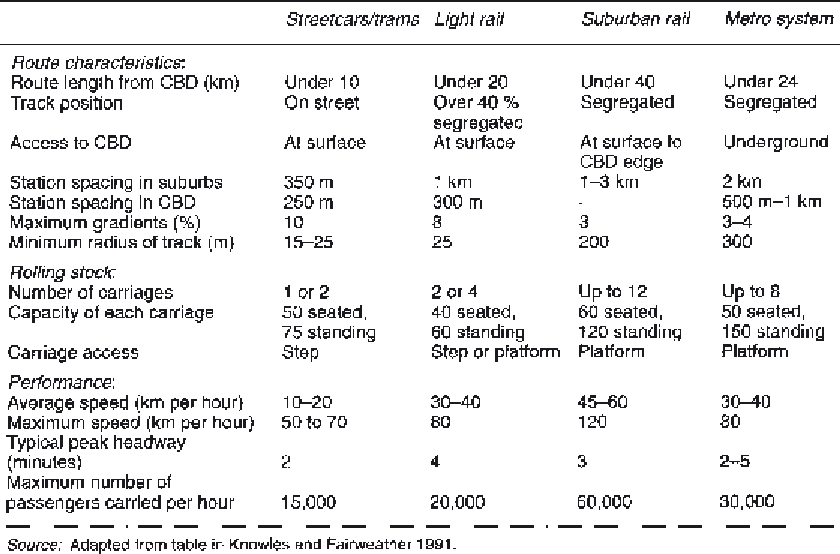Geography Reference
In-Depth Information
The public transport sector as a whole can
receive more positive support by upgrading
existing metro systems and by the introduction of
light rail transit (Plate 34.2). Metro rail systems are
generally confined to urban areas of over 500,000
and are currently operating in over ninety cities,
with twenty-eight more planned or being built.
Extensions to these systems are expensive,
particularly where underground routes are
necessary, but new lines are being built, especially
where they are seen as contributing to urban
revival and regeneration plans in addition to
providing additional passenger capacity (Hall and
Hass-Klau 1985).
Light rail is being increasingly adopted as an
alternative to a metro as it is cheaper, more easily
adapted to city centre road networks and offers
greater levels of access to passengers. Within city
centres, at least 40 per cent of the light railway
must be provided with an exclusive right-of-way
to avoid delays from traffic congestion, but else-
Plate 34.2
Metrolink light rail rapid transit in central
Manchester.
where light rail, buses and cars share the highway
until the fringes of the core are reached, when
light rail vehicles often make use of conventional
rail tracks (Table 34.2). About 117 cities, mainly
with populations of between 100,000 and 1
Table 34.2
Urban tramway, light rail, metre and suburban rail systems.


